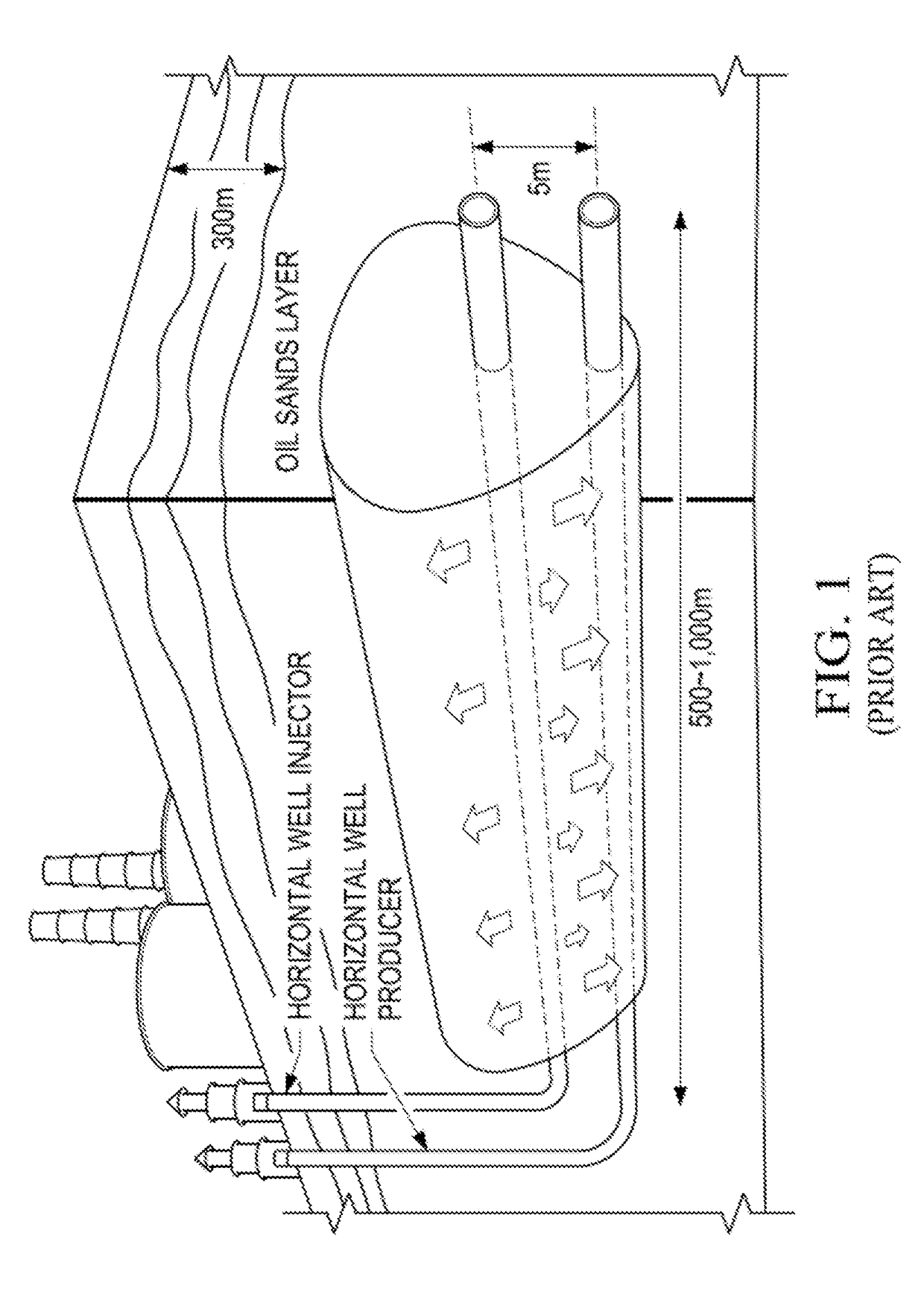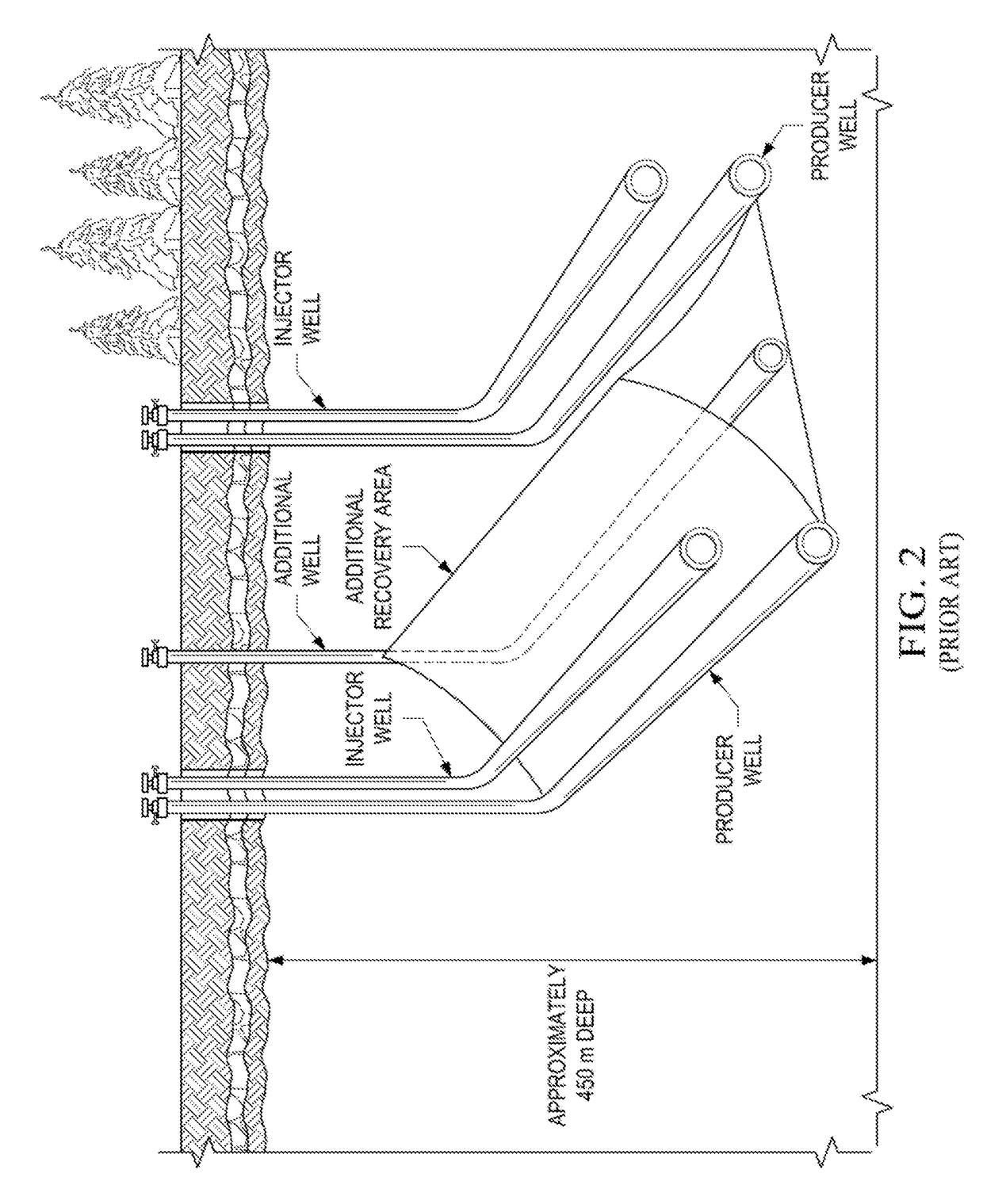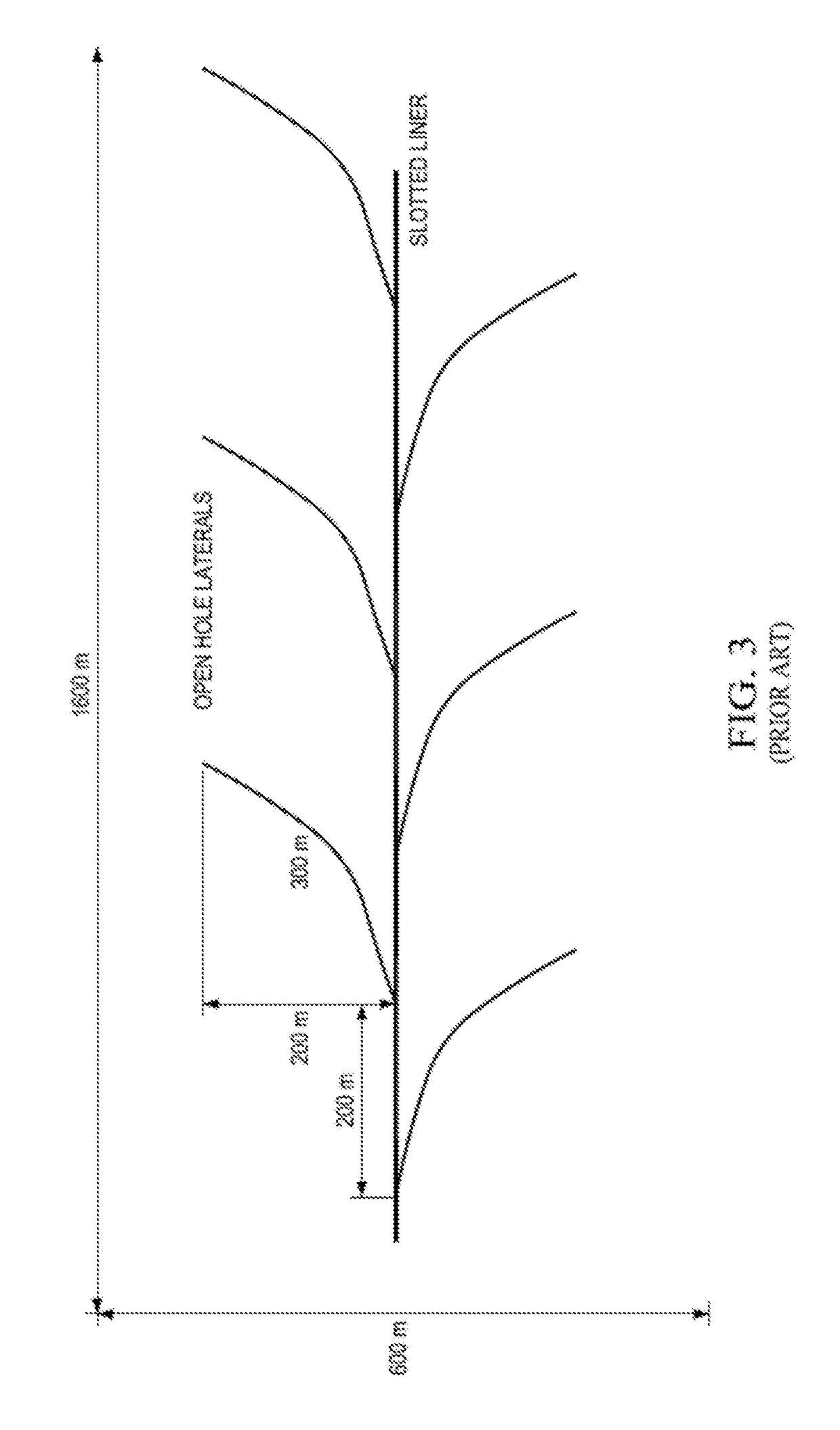Fishbones, electric heaters & proppant to produce oil
- Summary
- Abstract
- Description
- Claims
- Application Information
AI Technical Summary
Benefits of technology
Problems solved by technology
Method used
Image
Examples
Embodiment Construction
[0115]The following is a detailed description of the preferred method of the present invention. It should be understood that the inventive features and concepts may be manifested in other arrangements and that the scope of the invention is not limited to the embodiments described or illustrated. The scope of the invention is intended to only be limited by the scope of the claims that are appended hereto.
[0116]The present invention provides a novel well configuration for electrically heated production of heavy oils using a thermally conductive proppant for heat conduction and lateral wells for play coverage.
[0117]Methods and well configurations are proposed to drill open-hole fishbone or multilateral well bores and use downhole electrical heating in the main wellbores to produce oil from bitumen, oil sands or other heavy oil reservoirs. The fishbone or multilateral wells are filled with thermally conductive material, such as bauxite particles, so that the heat provided from downhole ...
PUM
| Property | Measurement | Unit |
|---|---|---|
| Length | aaaaa | aaaaa |
| Length | aaaaa | aaaaa |
| Fraction | aaaaa | aaaaa |
Abstract
Description
Claims
Application Information
 Login to View More
Login to View More - R&D
- Intellectual Property
- Life Sciences
- Materials
- Tech Scout
- Unparalleled Data Quality
- Higher Quality Content
- 60% Fewer Hallucinations
Browse by: Latest US Patents, China's latest patents, Technical Efficacy Thesaurus, Application Domain, Technology Topic, Popular Technical Reports.
© 2025 PatSnap. All rights reserved.Legal|Privacy policy|Modern Slavery Act Transparency Statement|Sitemap|About US| Contact US: help@patsnap.com



